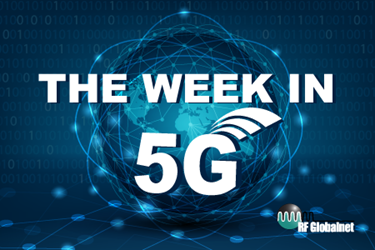The Week in 5G: 10/27/2020 — UK Inks Deal with Japan's NEC; U.S. Creates Rural 5G Fund
By Ed Biller

The Trump administration has not wavered in its pressure campaign for the U.S. Department of Defense to own and operate its own 5G network (amid accusations of the White House having a favored candidate in Rivada Networks), despite vocal dissent on the topic from partisans of both sides, the wireless industry, and the Pentagon, reports The Hill.
“Taxpayers should not foot the bill for something that the private sector is already committed to doing through a free market approach,” read a letter opposing nationalized 5G penned by several conservative groups, including Americans for Tax Reform and Heritage Action for America.
Also in the U.S., the Federal Communications Commission this week adopted rules creating the 5G Fund for Rural America, reports Light Reading. The fund “will distribute up to $9 billion over the next decade to bring 5G wireless broadband connectivity to rural America,” states the report.
In other network rollout news, Ericsson this week announced its Cloud RAN portfolio, aimed at providing communications service providers more versatility in their network buildouts across a variety of 5G use cases.
Cloud RAN by Ericsson is planned in stages, states an Ericsson press release, enabling service providers “to incrementally add Cloud RAN capabilities as a complement to their existing purpose-built 5G networks.” The first stage of Cloud RAN by Ericsson is expected to be available in 2021 Q4.
Additionally, after locking out Huawei equipment in a flip-flop from its previous position, the United Kingdom government has brought on Japan’s NEC Corp. to support development of 5G wireless networks.
Per a Japan Times report, the “announcement was made as Japan and the U.K. signed a post-Brexit bilateral free trade agreement.” Additionally, the U.K. will require network providers to remove already-incorporated Huawei equipment by 2027 due to “unresolved security concerns.”
Related, in writing about U.S. defense agencies’ increased need for cybersecurity in the 5G era, Phil Goldstein of FedTech notes that, according to an August Government Accountability Office report, 56 of 90 federal agencies surveyed reported using Internet of Things (IoT) technologies.
“Most often, agencies reported using IoT to control or monitor equipment or systems (42 of 56), control access to devices or facilities (39 of 56) or track physical assets (28 of 56) such as fleet vehicles or agency property,” Goldstein writes, adding “IoT devices are also being used to monitor water quality, watch the nation’s borders and control ships in waterway locks… [and] 25 of the 56 agencies currently using IoT technologies indicated that they planned to expand IoT use in the next five years.”
Meanwhile, VMware, Inc. and Samsung Electronics Co., Ltd. announced a collaboration aimed at accelerating “the innovation cycle through improved end-to-end network design and the agility required for 5G networks.”
“As part of this collaboration, the companies have been working together at Samsung’s lab to optimize and accelerate the readiness of Samsung’s various VNFs and CNFs, such as vRAN, 5G Core, MEC, Management, and Analytics, with the VMware Telco Cloud Platform,” states a Samsung press release.
Verizon and Microsoft, too, have teamed up, “announcing a collaboration they said will transform the retail, transportation, logistics, manufacturing and healthcare industries,” reports PYMNTS.
“The companies also said high-precision asset localization, tracking and positioning would be an advantage for businesses such as logistics and supply chain solutions provider Ice Mobility, which is already testing an on-site 5G platform,” states the report.
